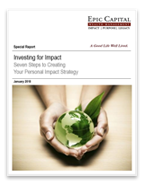Market Update – Bank Failures Raise Market Distress
Mar 13, 2023
 Stock and bond market activity was materially shaken last week as Silicon Valley Bank (SVB), the California bank subsidiary of SVB Financial Group (SIVB), fell into FDIC receivership. SVB is the first FDIC-insured institution to fail since 2020 and the largest by assets since Washington Mutual failed in 2008. The news has caused market participants to speculate if another shoe is to drop.
Stock and bond market activity was materially shaken last week as Silicon Valley Bank (SVB), the California bank subsidiary of SVB Financial Group (SIVB), fell into FDIC receivership. SVB is the first FDIC-insured institution to fail since 2020 and the largest by assets since Washington Mutual failed in 2008. The news has caused market participants to speculate if another shoe is to drop.
Many market participants are focusing in on SVB’s losses in its securities portfolio as a key cause for its demise, and participants are also tying the bank’s fall to the Federal Reserve’s (Fed) rising rate policies. We believe Fed policies were only partially to blame, as SVB’s niche customer base and lack of earning asset diversification (i.e. an unusually large portfolio of marketable securities relative to assets) also contributed to the bank’s failure.
Meanwhile, late Sunday, regulators closed Signature Bank (SBNY), an FDIC-insured New York state commercial bank with total assets of $110 billion. The institution fell victim to excess crypto-related deposits and was also experiencing material deposit outflows (-16.5% year-over-year).
At this time, we do not believe the SVB and SBNY bank failures are a deeper sign of things to come. However, we are paying close attention to ongoing developments in the banking sector and in other industries for hints of any widespread contagion. Indeed, more banks may come under distress (72 FDIC-insured banks have failed over the last 10 years), but we are not expecting SVB and SBNY to be the first steps on the way to a systemic crisis. LPL Research’s quantitative analysis of banks and savings and loan institutions in the Russell 3000 Index (see below) points to distinctive operating aspects of SVB that we believe contributed to its downfall. Unique exposures at SBNY (crypto) likely caused that institution to also suffer a lack of diversification in its depositor base.
Also on Sunday, regulators, including the U.S. Treasury Department, the Fed, and the Federal Deposit Insurance Corporation, indicated that all depositors of SVB and SBNY will be made whole. Meanwhile, we anticipate regulators will take emergency measures Monday and/or this week to help backstop the banking system and reinstall depositor confidence.
SVB Financial Group (SIVB) Background
SIVB is a bank holding company that serves emerging growth and middle-market growth companies in targeted niches, focusing on the technology and life-sciences industries. The company’s operations include a limited international presence, a U.S. wealth unit, a commercial bank, an investment bank, and a fund manager. Prior to the current distress, the bank (SVB) held $212 billion in assets and $175 billion in deposits.
SVB’s unique combination of bank depositors (individuals and institutions exposed to weakness in venture/start-up valuations) and degradation to its asset portfolio caused the institution to become troubled when faced with unusually large depositor withdrawals. The large amount of withdrawals, driven in part by SVB’s customer exposure to distress in the venture capital industry and its lack of stickier retail deposits, caused SIVB to sell marketable assets at losses to cover those withdrawals. This added further stress to its balance sheet as more fixed income securities were marked to market at much lower valuations. The news flow about SVB’s position intensified the withdrawal outflow, which ultimately resulted in the FDIC stepping in.
Signature Bank (SBNY) Background
Signature Bank is a full service commercial bank that serves privately-owned business clients and their owners and senior managers. The bank provides a line of personal banking products and services along with investment, brokerage, asset management, and insurance products.
The “House View” of LPL Research
LPL’s view of the markets and economy is guided by The Strategic & Tactical Asset Allocation Committee (STAAC) and the senior LPL Research members within the committee. This committee meets weekly to analyze and discuss capital market conditions and to adjust our market views accordingly. While still remaining slightly overweight equities, the STAAC downgraded its suggested equity exposure about two weeks ago, and the Committee removed non-core bond exposure in its tactical allocations. Thus, the risk-profile of the STAAC’s suggested multi-asset allocation has been dialed back to modest levels. We will continue to monitor bank industry and macro conditions and communicate any changes to our view.
- We believe investors should react to the SVB and SBNY developments with some caution as sentiment around bank conditions remains fragile and depositors in other banking institutions could react irrationally to the recent failures. We believe tactical investors should be maintaining their multi-asset allocations at or near benchmark levels.
- Today, the preferred stock sector may offer a tactical opportunity to add some risk to portfolios while bypassing some of the inherent risks of equities. Diversification is key here and mutual funds may offer that approach as they hold less risk than ETFs. For a discussion of options, please contact your financial advisor for an in depth review.
- Meanwhile, overall conditions should improve based on regulator backstops, in our view, but recent damage to sentiment should be respected, at least for now.
- For longer-term, strategic investors, we believe no changes to well-balanced allocations need to be made.
At the time of this writing, we are hearing that Fed officials are contemplating several measures to attempt to ensure stability in the banking system. Any such developments will likely be viewed as a positive by the market. However, we are also anticipating that depositors at other California banks may become uneasy and may seek to withdraw funds. Reuters has reported of such an occurrence at a First Republic Bank in California (ticker: FRC). The risk of this type of sentiment activity, as well as the late-Sunday news on Signature Bank, causes us to operate with tactical caution at this juncture, particularly when it comes to bank stocks.
Bank Industry Analysis Re: SVB Financial Group (SIVB)
To gather insight into the potential systemic risk posed by the SVB failure, LPL Research conducted quantitative analysis of the 241 publicly-traded banks and savings and loan institutions in the Russell 3000 Index. We analyzed each company’s deposits, deposit rate of growth, unrealized losses, total assets, marketable securities position, capital ratios, and marketable security positions relative to various balance sheet variables. Our findings were:
- SVB Financial Group (SIVB) was the 14th largest institution by assets ($212 billion) as of December 31, 2022.
- Of all the banks in our studied universe, SVB Financial Group had far more marketable securities relative to total assets, total deposits, and earning assets: 55.4%, 67.4%, and 60.4%. The average for the banks with over $25 billion in assets was 22.2%, 29.5%, and 25.3%. This means SIVB was running a balance sheet relatively more prone to changes in market prices than its counterparts and thus was more exposed to price pressure in the bond market.
- SIVB’s deposit growth over the last year (-8.5%) was materially worse than the universe of banks with over $25 billion in assets (+5.6%). The lack of asset diversification made it uniquely difficult for SIVB to manage against high withdrawal flows.
- The niche nature of SIVB’s clientele, coupled with the firm’s balance sheet mismanagement, were distinctive contributors to the bank’s downfall, in our view. While other banking institutions need to be scrutinized for their specific business exposure, we do believe broader asset diversification among many banks we have analyzed can alleviate the risk of another high-profile bank failure.
IMPORTANT DISCLOSURES This material is for general information only and is not intended to provide specific advice or recommendations for any individual. There is no assurance that the views or strategies discussed are suitable for all investors or will yield positive outcomes. Investing involves risks including possible loss of principal. Any economic forecasts set forth may not develop as predicted and are subject to change. References to markets, asset classes, and sectors are generally regarding the corresponding market index. Indexes are unmanaged statistical composites and cannot be invested into directly. Index performance is not indicative of the performance of any investment and do not reflect fees, expenses, or sales charges. All performance referenced is historical and is no guarantee of future results. Any company names noted herein are for educational purposes only and not an indication of trading intent or a solicitation of their products or services. LPL Financial doesn’t provide research on individual equities. All information is believed to be from reliable sources; however, LPL Financial makes no representation as to its completeness or accuracy. All index and market data from Bloomberg. This Research material was prepared by LPL Financial, LLC. Securities and advisory services offered through LPL Financial (LPL), a registered investment advisor and broker-dealer (member FINRA/SIPC). Insurance products are offered through LPL or its licensed affiliates. To the extent you are receiving investment advice from a separately registered independent investment advisor that is not an LPL affiliate, please note LPL makes no representation with respect to such entity.
-
Not Insured by FDIC/NCUA or Any Other Government Agency
-
Not Bank/Credit Union Guaranteed
-
Not Bank/Credit Union Deposits or Obligations
-
May Lose Value
Tags: Current Events
More Insights
Few terms in personal finance are as important, or used as frequently, as “risk.” Nevertheless, few terms are as imprecisely defined. Generally, when financial advisors or the media talk about investment risk, their focus is on the historical price volatility of the asset or investment under discussion.
As Americans get their grills and beach chairs ready for the July 4th holiday, the stock market and the weather across much of the country have both been on heaters. Stocks and bonds continue to effectively navigate a complex policy landscape shaped by evolving trade dynamics, geopolitical tensions, and fiscal stimulus. The market’s resilience in … Continue reading “Market Update – America Gets Record High Stock Prices for Its Birthday”
Birthdays may seem less important as you grow older. They may not offer the impact of watershed moments such as getting a driver’s license at 16 and voting at 18. But beginning at age 50, there are several key birthdays that can affect your tax situation, health-care eligibility, and retirement benefits.
During times like these when geopolitical headlines can be unsettling for investors, we at LPL Research like to remind ourselves of one of our key investing principles. Markets have always faced challenges —ranging from geopolitical conflicts and economic downturns to natural disasters, political upheaval and health crises. These events often trigger short-term volatility and shake … Continue reading “Why Long Term Investing Beats Selling in Volatile Times”
Are you concerned about the inheritance taxes your heirs may have to pay? Then you may want to consider creating charitable lead trusts.
Services
Epic Capital provides the following comprehensive financial planning and investment management services: Learn More >



 Top of Page
Top of Page











